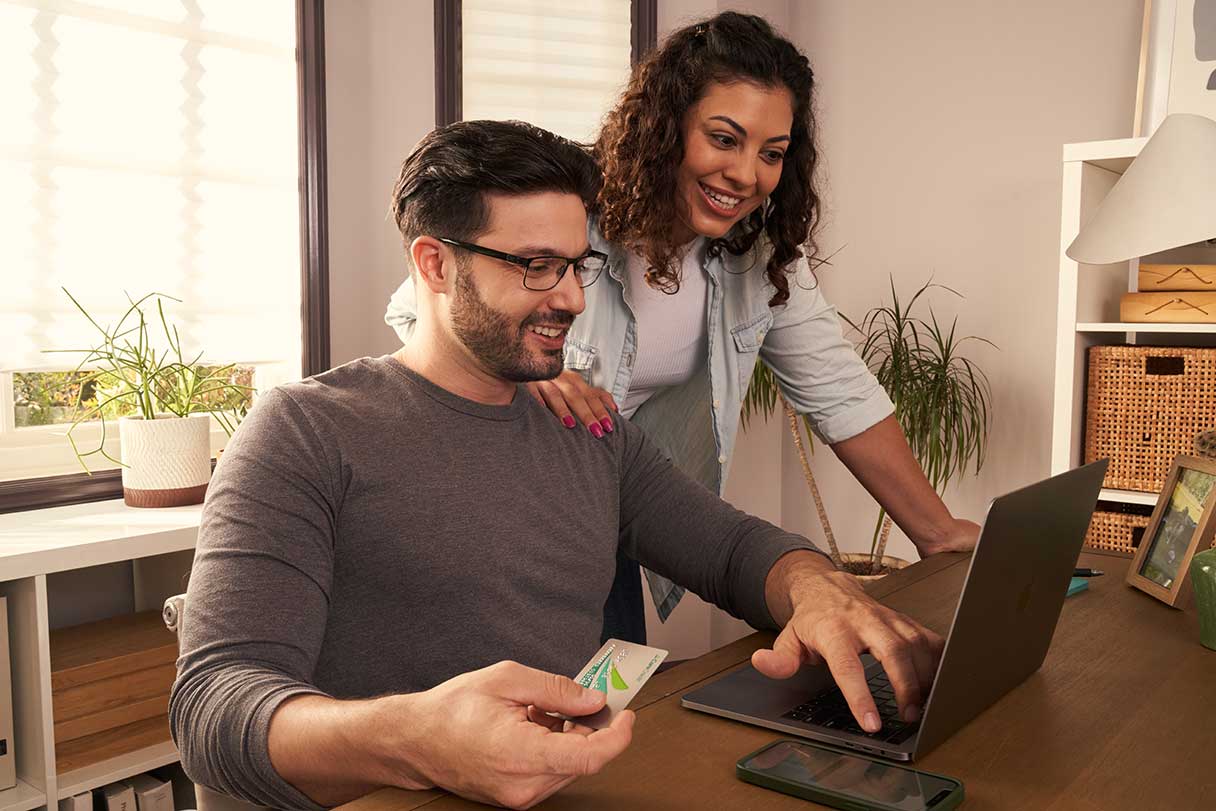From leaky pipes and fender benders to dental work and vet visits, life’s spur-of-the-moment financial emergencies can come at you fast. And, according to the latest data from the Federal Reserve, nearly 4 in 10 Americans said they would not be able to cover a $400 emergency expense with cash.1
Now, imagine you’re in that position and hit with an unexpected bill in the thousands or a sudden drop in income. This is why building an emergency fund is so important. Having just-in-case money can give you financial security and help you avoid going into debt.
This guide will break down the benefits of having an emergency fund, with simple steps on how to get one started.
What Is an Emergency Fund?
An emergency fund is a savings account that's separate from your other money, as it's solely dedicated to covering financial emergencies.2 The purpose is to keep growing it (and not spend it) so that it is eventually large enough to protect against things that can cause financial havoc, like losing a job, having to pay for a major home or auto repair or facing a costly health issue.3
Even when you first start your emergency fund with a few hundred dollars, it can provide peace of mind should smaller expenses arise. Every time you don’t have to rely on credit cards or other interest-charging lending products because you don’t have the money is a win for you.
The key is defining what a true emergency is and setting boundaries for when and why you’ll pull from your emergency fund. Ideally, the best thing to do with an emergency fund is to pretend it doesn’t exist — until you actually need it for something important, that is.
Paying for a necessary car repair, like new brakes, might be a good use of your emergency fund, but getting your car detailed would not. If you needed to book a flight to attend the funeral of a loved one, that could be a good reason to dip into your fund, but withdrawing to pay for a spa or golfing weekend with friends would be a less responsible use.
Other times you might use an emergency fund could be to:3
-
Cover pet health visits
-
Deal with medical expenses, like high insurance deductibles
-
Pay bills during a loss of income
-
Replace technology that you need for work or school
Examples of when not to draw from an emergency fund might include:
-
Aesthetic home or car upgrades
-
Concert tickets
-
An elaborate birthday party
-
Holiday gifts
Benefits of Having an Emergency Fund
Having an emergency fund is not only practical from a personal finance standpoint, but it’s also good for your mental health and well-being.4 Many people who live paycheck to paycheck feel stressed out knowing they don’t have much financial wiggle room. But with an emergency fund, each extra dollar you are able to save is another dollar you don’t have to worry about coming up with.
Besides stressing less, an emergency fund is one of the foundational things you can do to achieve financial security. Being financially secure means you can comfortably cover your bills and feel optimistic about the progress you’re making on your long-term goals — even when the unexpected happens.5
An ample emergency fund also gives you more flexibility to save and invest for other things that are important to you, whether it’s a family trip, a special event, a new car, a down payment on a home or future college expenses. That’s because even if an emergency does arise, you won’t have to delay or derail your other goals to pay for it.
How to Build an Emergency Fund: 6 Steps
Building an emergency fund does take time and patience, but it’s a fairly simple process. Just follow these steps to get started:
-
Set an attainable goal. Most experts agree that you should aim for three to six months of living expenses. However, that is a large sum of money that will take some time to achieve, so it’s OK to start with smaller goals like $500, then $1,000 and so on.6
-
Evaluate expenses. To figure out your end goal, you should have a grasp on how much it costs to run your household each month. Add up your housing costs, utility bills, minimum monthly debt payments, healthcare, pet care, child care, essential food and groceries and transportation.3
-
Open a separate savings account. Remember, an emergency fund needs to be separate from your everyday spending account. It should be accessible but not super easy to access, so consider going with a different banking institution from your checking account so transfers aren’t instant. An online high-yield savings is a good choice, especially since it earns competitive interest to help your savings grow faster.6
-
Automate your savings. People often have good intentions to save what’s left over after they pay their bills, but often never get around to it. Setting up automatic transfers to your emergency fund each payday will help you accumulate savings without any effort.7 The more you can save, the better, but even stashing away $20 at a time can help you make progress.
-
Increase contributions. Once you get going, you can look for areas in your budget that might help fast-track your emergency fund progress, such as cutting back on spending in certain categories.6 You can also try to increase your income by working overtime or taking on a side gig.6 If you get a raise or any cash windfalls such as a tax refund, work bonus or monetary gift, make a plan to direct a portion of that extra money into your emergency fund as well.3
-
Replenish funds after use. If you do end up using part of your emergency fund, begin making contributions again when you are able to do so until you reach your benchmark goal.6 That way, it will be readily available for you the next time something comes up.
Achieve Rainy Day Readiness
Being prepared financially for whatever life throws at you is a good feeling. It’s one less thing to worry about, and it can protect you from going into debt. Even if you don’t have the means to fully seed an emergency fund right away, if you get started now, you'll make things easier for your future self.
Frequently Asked Questions About Emergency Funds
Being strategic about how you use your emergency fund and following best practices can help you get your emergency fund to a healthy level. Here are a few things you should know.
Managing Health and Wellness Costs With the CareCredit Credit Card
If you are looking for an option to help manage your health and wellness costs, consider financing with the CareCredit credit card. Get the care you want or need with easy, flexible financing options that allow you to pay for out-of-pocket expenses over time.* Use our Acceptance Locator to find a provider near you that accepts CareCredit. Continue your wellness journey by downloading the CareCredit Mobile App to manage your account, find a provider on the go and easily access the Well U blog for more great articles, podcasts and videos.
Your CareCredit credit card can be used in so many ways within the CareCredit network including vision, dentistry, cosmetic, pet care, hearing, health systems, dermatology, pharmacy purchases and spa treatments. How will you invest in your health and wellness next?
Author Bio
Dawn Papandrea is a journalist with more than two decades of experience covering personal finance and consumer issues. She has written for leading financial publications and organizations, including U.S. News & World Report, Investopedia, Bankrate and others.








